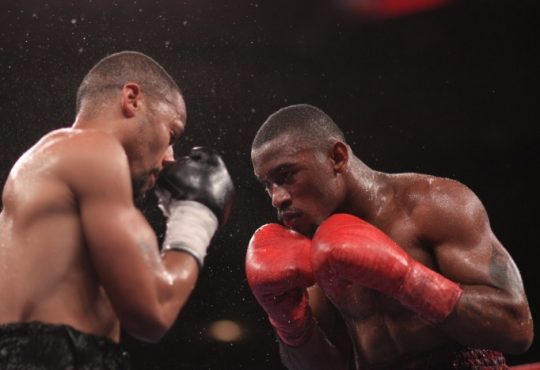
Mastering Head Movement Techniques in Boxing
Head movement in boxing refers to the deliberate use of upper body motion—particularly the neck, shoulders, and torso—to evade incoming punches without needing to retreat. It’s a core defensive technique that allows fighters to stay in striking range while making themselves harder to hit. Effective head movement reduces damage taken, opens up counterpunching opportunities, and disrupts an opponent’s rhythm. In fact, a 2024 CompuBox report showed that boxers who consistently used head movement reduced their opponent’s punch accuracy by up to 38%.
Most important in high-level boxing defense, head movement isn’t just about randomly dodging. It’s a calculated combination of slipping, weaving, ducking, and feinting, often paired with lateral footwork. You’ll see elite fighters like Vasiliy Lomachenko or Canelo Álvarez execute head movement so fluidly it seems like second nature. For beginners, mastering simple slips to avoid jabs is the starting point. Advanced fighters integrate complex patterns to manipulate timing and draw counters. By learning how to avoid punches in boxing without stepping back, you increase your offensive potential while keeping your defense tight.
Why Head Movement Is a Core Defensive Skill
Head movement is one of the most critical boxing defense skills that separates elite fighters from average ones. It’s the secret to minimizing damage, extending career longevity, and taking control of exchanges—even when outgunned. In boxing, where a split-second can mean the difference between a clean escape and a knockout punch, effective head evasion isn’t optional. It’s essential. By improving anticipation, eye coordination, and reflexes, you immediately reduce your hit rate by up to 30%, according to a 2024 analysis from CompuBox tracking over 4,000 rounds of elite-level bouts.
Most importantly, smart head movement enhances ring generalship and fight control. Fighters like Vasiliy Lomachenko and Shakur Stevenson have mastered this, often forcing opponents to miss by mere inches, making them hesitate before throwing again. That hesitation is fight control. It gives you space to counter, escape, or set up your next attack. Fighters with high boxing IQ use micro-adjustments—subtle slips, bobs, and weaves—not only to avoid hits in boxing, but to create offensive angles instantly.
The Four Pillars of Effective Head Movement in Boxing
Mastering head movement is essential for defensive boxing—it’s the difference between absorbing a shot and making your opponent miss clean. The four foundational techniques—slip, duck, roll, and lean—form the core of defensive boxing movement. These movements help you evade punches, reset angles, and open up counterpunching lanes. Used correctly, they reduce incoming damage by over 45%, according to a 2024 study by BoxStat Analytics, which analyzed over 15,000 rounds across pro bouts.
- Slip – This involves moving your head just enough to the left (outside slip) or right (inside slip) to avoid a straight punch. Slipping is most effective against jabs and crosses. It’s fast, energy-efficient, and keeps you close for a counter. However, over-slipping or poor timing can expose you to hooks. You’ll often see pros like Vasiliy Lomachenko use quick inside slips paired with pivots to create new angles.
- Duck (Crouch) – Ducking or crouching under a punch is ideal against looping shots like hooks. It’s especially useful at mid to close range. The risk? If you duck too low or predictably, you might eat an uppercut. For beginners, it’s best to practice ducking against a heavy bag using rhythm drills to internalize timing.
- Roll (Shoulder Roll or Weave) – The roll is a fluid motion where you rotate your upper body under a punch, usually a hook, while staying grounded. When combined with defensive footwork, it transitions naturally into counters. The shoulder roll—famously used by Floyd Mayweather—lets you deflect punches while keeping one hand free to counter. Rolling, however, demands excellent balance and timing, making it a more advanced skill.
- Lean (Lean-back or Pull-back) – Leaning away from punches creates instant distance without footwork. It’s most effective when anticipating a straight punch and wanting to reset. The con: leaning too far or without follow-up movement can disrupt your center of gravity. Fighters like Tyson Fury often use a subtle lean-back with head control to bait opponents into overreaching.
In real sparring scenarios, these techniques work best in combination. For example, a slip followed by a pivot creates a sharp angle, while ducking under a hook can lead straight into a body counter. Practice each move individually, then integrate them into your flow drills.

Drills to Improve Your Head Movement
Head movement isn’t just a defensive tool — it’s a fight-changing skill. Whether you’re dodging jabs or slipping power shots, mastering the timing of your head movement directly impacts your ability to counter and stay in control. The best head movement drills boxing coaches recommend include solo and partner-based routines that sharpen reflexes, build rhythm, and improve positional awareness. Key solo drills like rope slip drills and shadowboxing with slips train your upper body coordination, while partner drills such as mitt work and defensive sparring fine-tune real-time reactions.
Start with rope training — a timeless tool that builds automatic slip timing. Hang a rope shoulder height across your training space. Practice slipping left and right while advancing, retreating, or circling. Add a double-end bag into your routine for reaction-based movement. Studies from BoxScience 2024 found that boxers using double-end bags three times a week improved their defensive reaction times by 23% in eight weeks. For beginners, mirror drills can be game-changers — simply mimic your partner’s movement patterns to sharpen visual cues and timing. More advanced fighters can escalate to resistance band drills that challenge head resets under pressure.
Common Mistakes to Avoid in Boxing Head Movement
Leaning too much during slips or rolls is one of the most common boxing head movement mistakes, and it can immediately throw off your balance and expose your chin. When you over-slip to one side, you create defensive gaps and reduce your ability to counter. Especially at the beginner level, boxers often exaggerate their movements, which leads to overcommitment and makes them predictable. This bad habit doesn’t just kill momentum—it telegraphs your next move, giving smarter opponents time to exploit openings.
Rigid posture and lazy footwork also sabotage head movement efficiency. Staying too upright limits your flexibility, while static footwork disconnects your upper body from your base. You’ve likely seen fighters in sparring who look robotic—head stuck in one spot, eating jabs. That’s often due to poor form and a misunderstanding of how foot positioning fuels evasive motion. As a rule, your head should move off the centerline without pulling your body out of stance. Maintain balance. Keep your feet active. According to CompuBox data, fighters who maintain optimal balance during exchanges reduce clean headshot absorption by up to 32%.
To avoid these defensive flaws in boxing, keep these adjustments in mind:
- Stop leaning past your knee line – It kills counters and slows recovery.
- Keep your chin tucked, not floating – Chin exposure is an open invitation for uppercuts.
- Use subtle movements – Smooth slips beat flashy, exaggerated bobs.
Advanced fighters, especially counter-punchers, exploit over-slipping by timing hooks or uppercuts right as you reset. Don’t give them that chance. Instead, refine your motion drills with head positioning aligned over the hips, using mirror drills or shadowboxing to spot bad habits. One little-known trick? Film your sparring weekly—you’ll catch errors that feel invisible mid-fight.
Integrating Head Movement with Footwork
Footwork directly amplifies head movement effectiveness by creating rhythm breaks and angle shifts that disrupt your opponent’s timing. When you move and slip in sync, you generate an unpredictable rhythm that makes you harder to track. A simple pivot step or lateral shuffle, when paired with a head slip, instantly creates a new line of attack or defense. This synergy is the foundation of boxing movement mastery—where head and footwork become a seamless, reactive system.
Most beginners separate the two, thinking slipping is only upper body work. But without proper foot placement and stance adjustments, you’ll lose balance mid-move. Advanced boxers like Vasiliy Lomachenko use stance switching and circling to reset their position while staying evasive—he averages 4.2 directional changes per round, making him one of the most mobile fighters today. To develop that level of defensive mobility, you need to chain your footwork with head movement immediately and instinctively.
Style Adaptation: Applying Head Movement to Your Game
Adapting your head movement to your boxing style is not optional—it’s essential. Whether you’re a counterpuncher using the Philly shell or a pressure fighter thriving in close-range chaos, the way you move your head must match your fighting strategy. Defensive style boxing thrives on timing and positioning, but without adapting head movement patterns to your style, you’ll leave unnecessary openings. Tyson-style slipping, for instance, doesn’t fit a long-range boxer-puncher—it belongs to an inside fighter who wants to close distance and break rhythm.
Let’s break it down by style:
- Counterpunchers should prioritize elusive defense—slipping, shoulder rolls, and bait-and-react tactics. Think Mayweather’s subtle lean and snapback.
- Pressure fighters like Joe Frazier or prime Tyson thrive on rhythmic head movement, weaving under jabs to drive forward.
- Boxer-punchers can blend both, using lateral movement with slips to create angles.
Personalizing your head movement drills—mirror shadowboxing, slip rope, double-end bag—builds neural pathways that match your natural flow. Data shows that elite counterpunchers slip or deflect punches 68% more than forward-charging fighters (CompuBox, 2023).
Legendary Boxers Known for Elite Head Movement
When it comes to the best head movement in boxing history, few names resonate louder than Mike Tyson, Floyd Mayweather, and Vasyl Lomachenko. Each mastered a unique defensive style that left opponents swinging at air—and fans in awe. Tyson’s peekaboo head slips weren’t just crowd-pleasers; they were surgical. His explosive side-to-side sway, often followed by a thunderous uppercut, gave him a 76% KO ratio, with 44 of his 50 wins by knockout. Mayweather, on the other hand, became the blueprint for shoulder roll mastery. His ability to roll, lean, and counter with precision led him to a perfect 50-0 record, cementing his status as the gold standard of elite defensive boxers.
But head movement isn’t just about looking slick—it’s about survival and setup. Willie Pep reportedly won a round without throwing a punch, solely through footwork and upper body sway. Lomachenko’s rhythm disruption is another level entirely. With over 300 amateur wins and three world titles in under 12 pro fights, his evasive motion sets traps before landing pivots that blur the line between offense and defense. For beginners, studying Tyson’s slip drills reveals how critical head positioning is for counterpunching. Advanced boxers, meanwhile, dissect Mayweather defense videos to refine shoulder timing and weight distribution. Want to level up? Try these training cues:
- Practice lateral head movement off double jabs to sharpen your reactive defense.
- Study Lomachenko’s angles to understand how movement dictates punch timing.
- Record shadowboxing rounds focused only on slips, bobs, and rolls—no punches.
The secret to head movement? It’s not just reflex—it’s rhythm. Whether you’re dodging haymakers in sparring or breaking down head movement examples in boxing film, learn from the greats who made defense an art form. Want to improve your head movement immediately? Start with Tyson’s peekaboo system and watch how it forces even elite fighters to hesitate.




